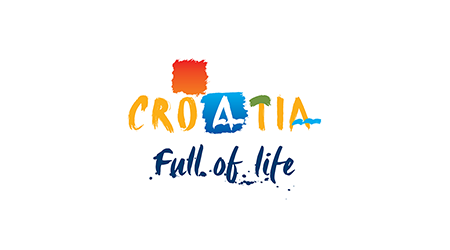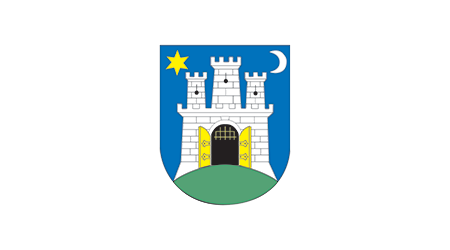West

Source: Archives of Zagreb County Tourist Board
Zaprešić
The town of Zaprešić will forever be associated with Count Josip Jelačić (1801- 1859), who led the movement for Croatian self-government in 1848 and retreated to his estate near Zaprešić in the years that followed. Jelačić’s former palace at Novi Dvori is still undergoing
long-term restoration, but the surrounding park is full of surprises. A half-timbered granary now provides an atmospheric home to the Matija Skurjeni Gallery, honouring the locally born, self-taught artist whose Zaprešić scenes of village life possess a surreal, dream-like quality.
Look out too for the spindly spires of the Jelačić family mausoleum, a Neo-gothic delight designed by the architect of Zagreb cathedral, Hermann Bollé. With plenty of forest paths and a driving range for golfers, Novi Dvori has bags of recreational potential.

Source: Archives of Marijin dvor Lužnica Spiritual and Education Center
Dvorac Lužnica
Rising above the cornfields just east of Zaprešić, Lužnica Palace is an outstandingly handsome example of an 18th century aristocratic residence, its decorous turrets giving it the appearance of a French chateau.
Owned by a succession of noble families, the palace was in 1925 presented to the Sisters of Charity of St Vincent de Paul, who now use it as a centre for spiritual contemplation and prayer.
The palace’s landscaped park has been lovingly restored to its nineteenth-century state, and is open to all-comers on Sunday afternoons. Famous for its stately oak trees, the park is also rich in natural herbs - which are used by the Sisters to make liqueurs.

Source: Archives of Zagreb County Tourist Board
Samobor
Located at the foot of green hills beside the burbling Gradna stream, Samobor is one of northern Croatia’s best-preserved country towns, and receives a steady stream of day-trippers from Zagreb as a result. Many visitors gravitate towards the caféfilled main square to sink their teeth into Samoborske
kremšnite, the custardcoloured cream pastries made by all the local bakeries. Fans of arts and crafts will find a wealth of things to see in Samobor. The career of one of Croatia’s most enjoyable modern artists is celebrated at the Zlatko Prica Gallery. With ground-breaking photography at Foto Galerija Lang, and colourful folk costumes at the Town Museum, there’s a lot to take in.
It’s the perfect spot for a woodland stroll, too, with paths leading up to the hillside park of Anindol before darting through the forest towards the dramatic ruins of Samobor’s 13th-century castle. One of the best times to visit Samobor is during the carnival season, when parades and masked revels light up the town on the weekend preceding Shrove Tuesday.

Source: Archives of Zagreb County Tourist Board
Samoborsko gorje
Immediately west of Samobor rise the Samoborsko gorje or “The Samobor Hills”, a small group of heavily forested, smooth-topped mountains that make ideal day-trip targets for the recreational hiker. Highest point of the Samoborsko gorje is the 879m Japetić, a 2-hour walk
from Šoićeva kuća, a popular restaurant and recreation spot. Marking the southeastern extent of the range is the steep-sided summit of Okić, crowned by the ruins of one of Croatia’s most forbidding medieval fortresses. Lying on the flanks of Okić, the Etno-kuća pod
Okićem (“Ethno-house below Mt Okić”), is a privatelyowned museum displaying traditional furnishings and costumes in a restored village house.

Author: D. Kunić; Source: Archives of Jastrebarsko Tourist Board
Plešivica
Spread across the southern limbs of the Samoborsko gorje, the straggling village of Plešivica occupies a beautiful landscape of undulating hills ribboned with vineyards. Alongside excellent Pinots, Chardonnays and Rieslings, the area is also renowned for its Portugizac, a fruity red wine that - rather like Beaujolais - is best drunk when young.
The arrival of the new Portugizac in October is a major cause for local celebration. Many of Plešivica’s vine-growing families offer the chance to taste their wines, often accompanied by cold cuts of meat and cheese. The Plešivica Wine Roads brochure, available from the Zagreb County Tourist Board, will provide you with all the relevant addresses.

Source: Archives of Zagreb County Tourist Board
Žumberak
Of the many unspoiled highland regions within day-trip distance of Zagreb, Žumberak is among the most alluring. In many ways an extension of the Samoborsko gorje, the Žumberak consists of a succession of high ridges, narrow valleys and isolated villages filled with corn-
drying barns and piles of chopped firewood. Touring the Žumberak’s windy roads, you are far more likely to come across farmers’ tractors than family cars. Much of the range falls under the protection of the Žumberak Nature Park, whose headquarters in
the village of Slani Dol, just west of Samobor, can provide information on hiking and mountain-biking opportunities.
Brochure

 Hrvatski
Hrvatski English
English Deutsch
Deutsch Spanish
Spanish French
French Italian
Italian Russian
Russian Korean
Korean Japanese
Japanese Chinese
Chinese











